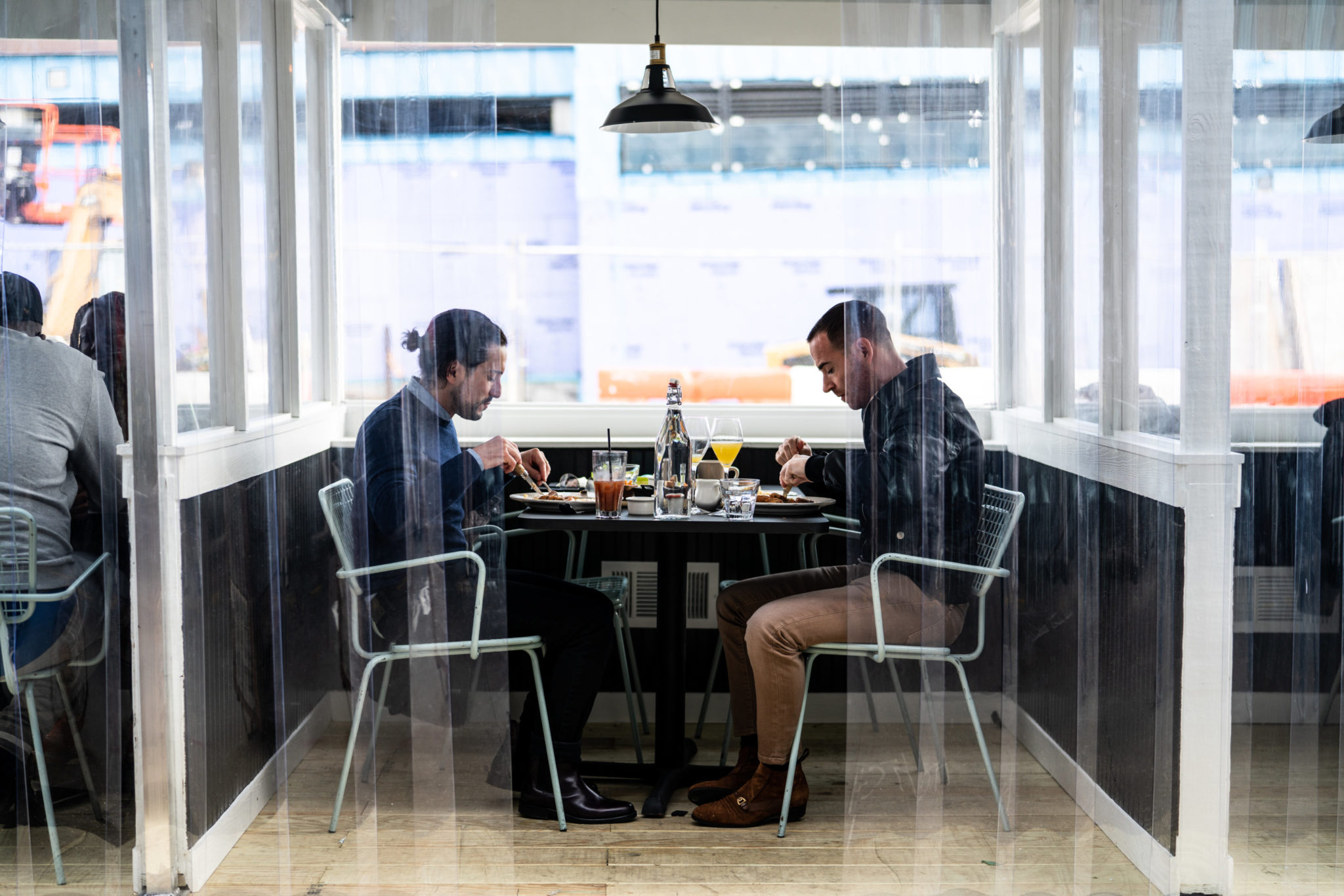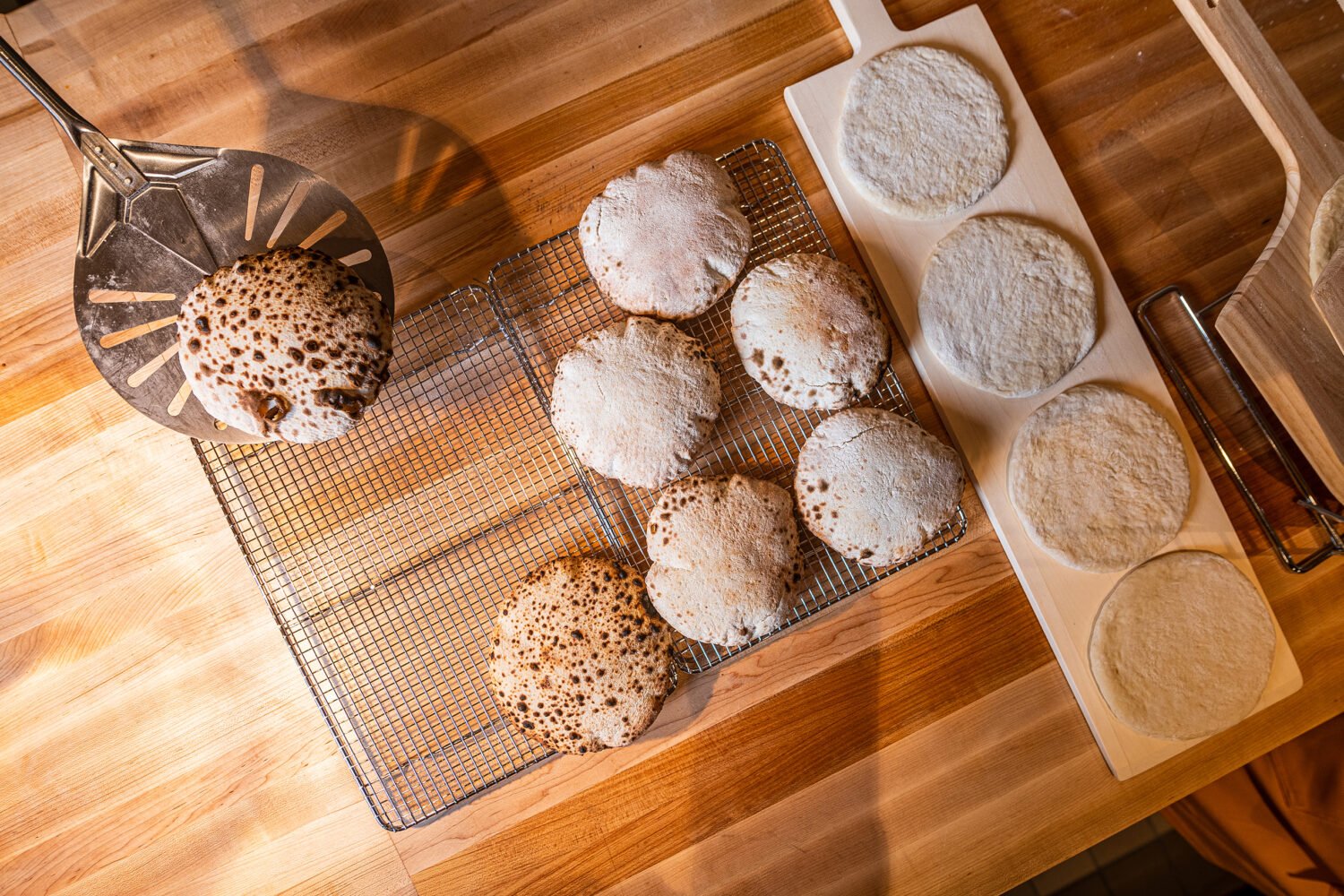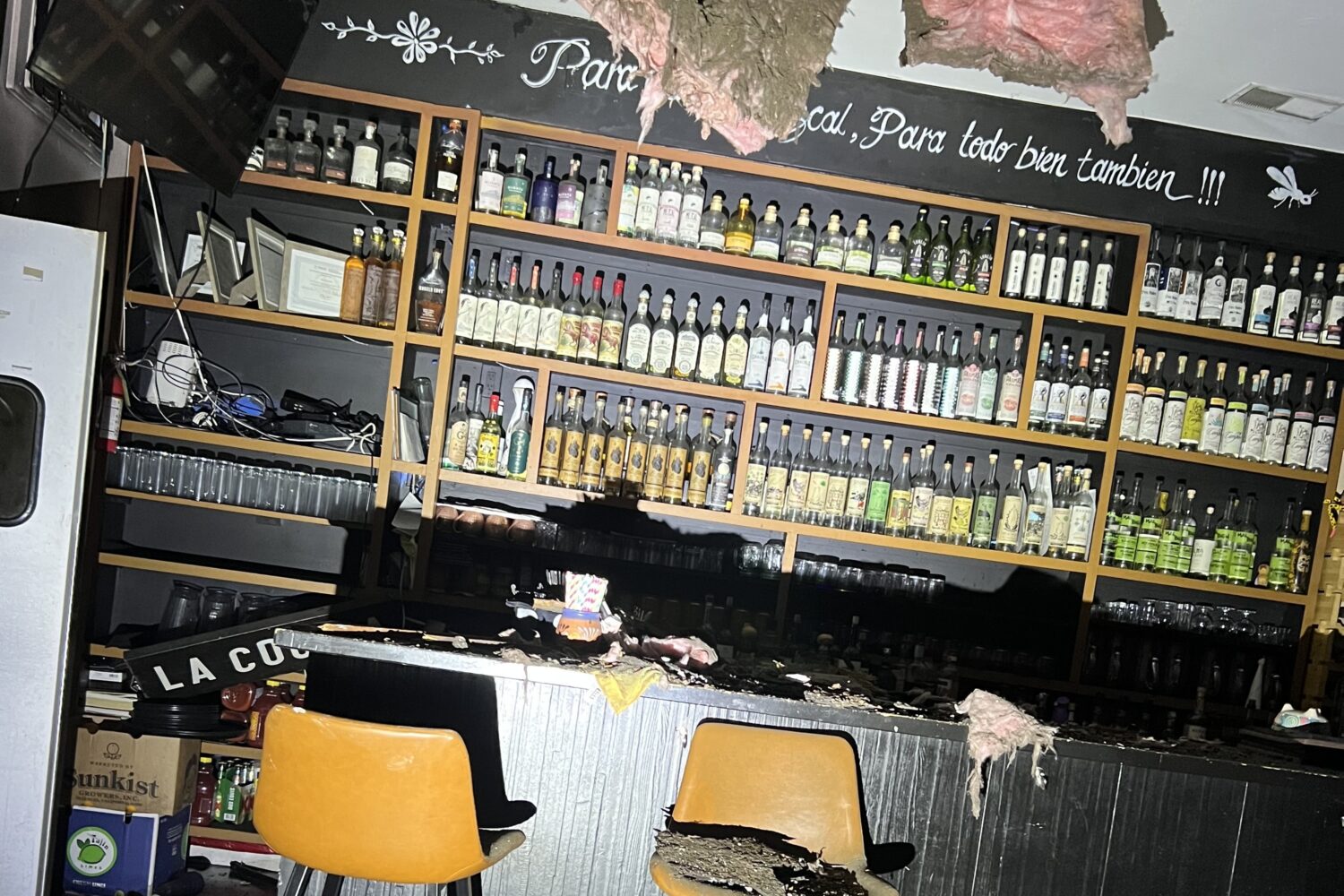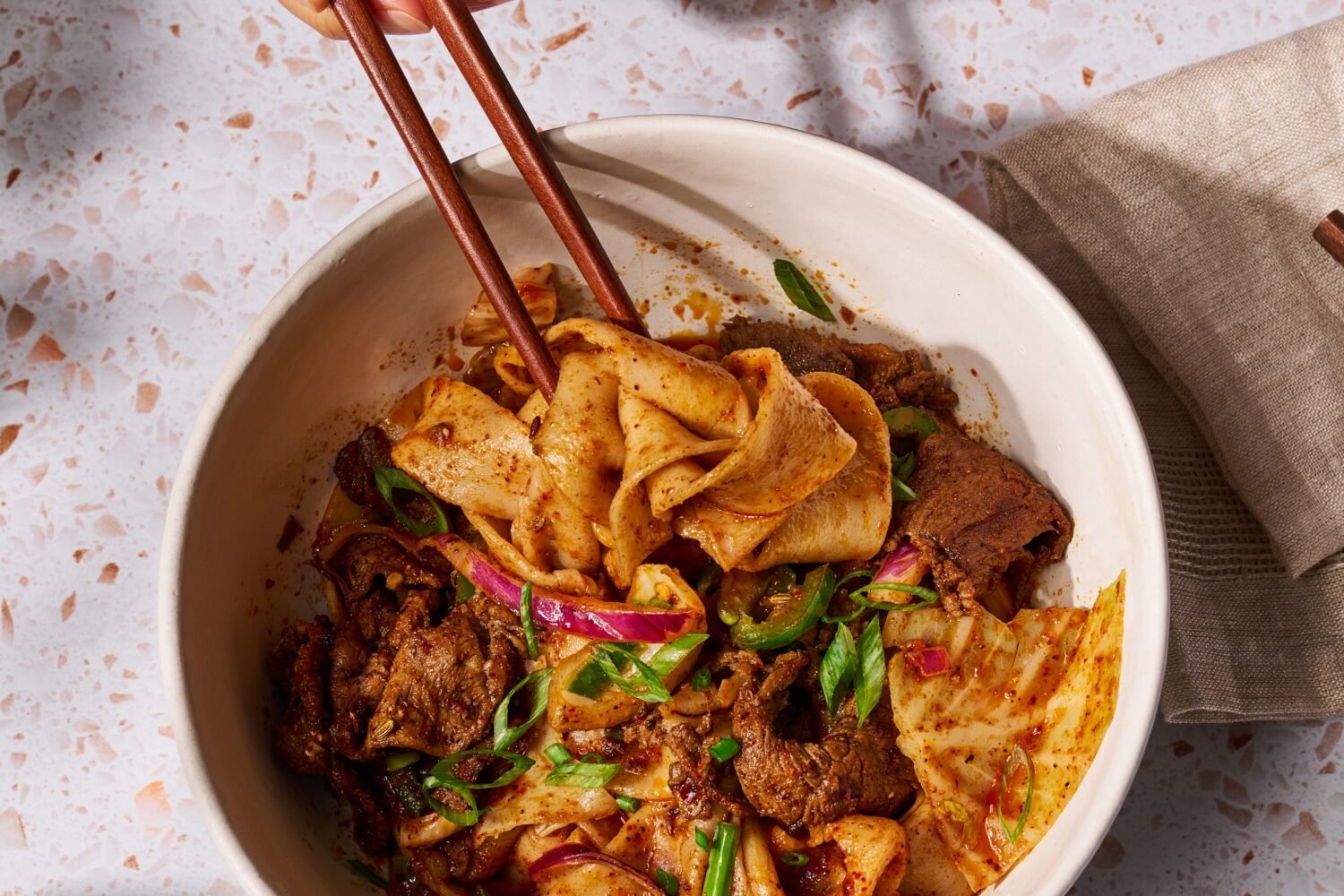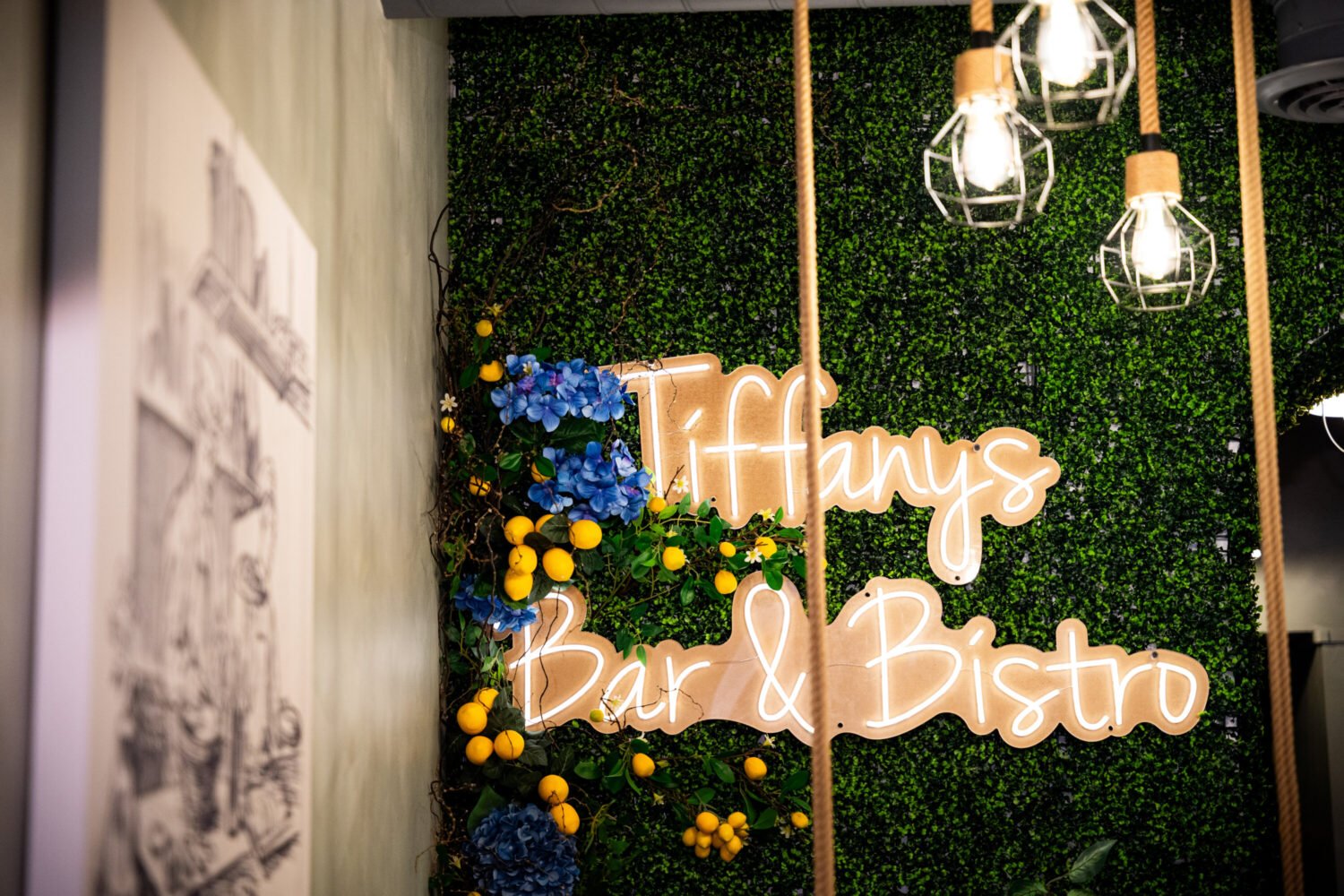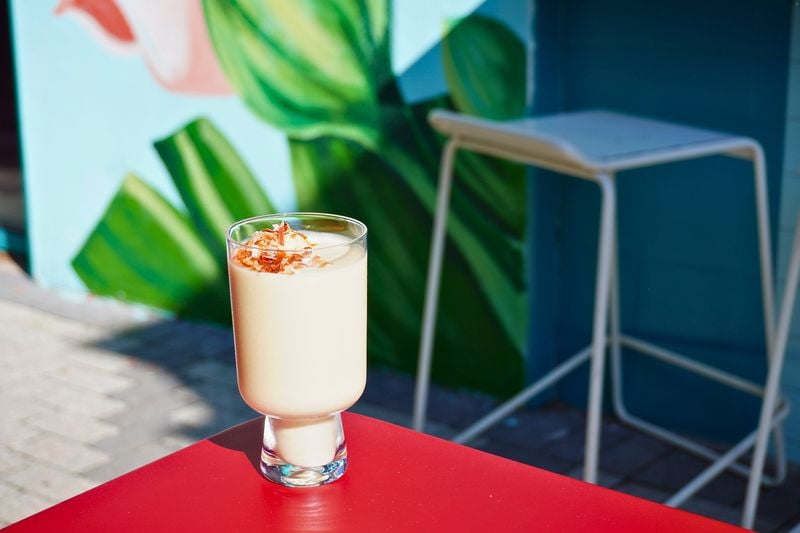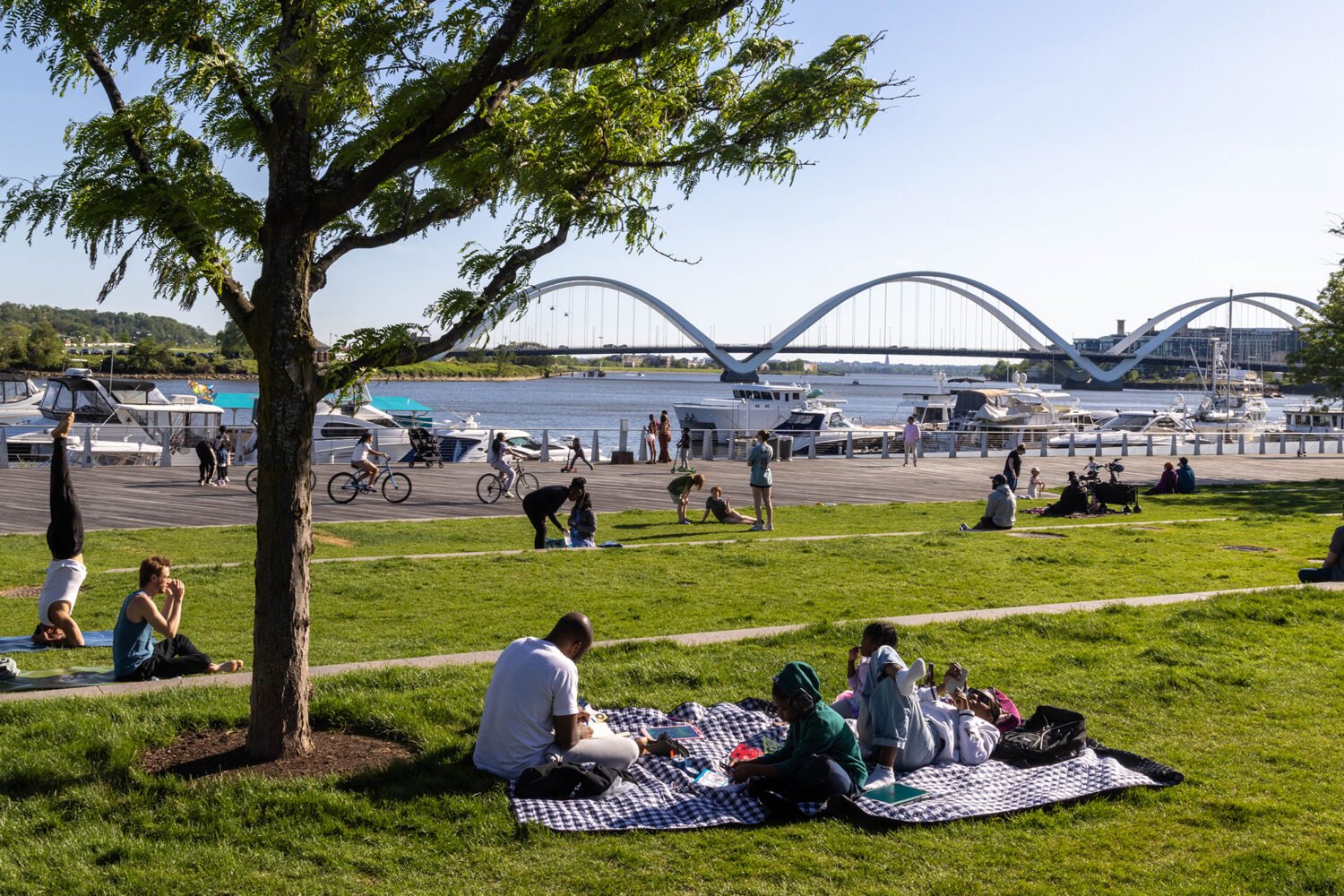About Restaurant Openings Around DC
A guide to the newest places to eat and drink.
Restaurateurs are calling it a “grand reopening”—DC lifts capacity limits and the strictest Covid regulations on bars and restaurants today, May 21. Most notably, indoor dining rooms can be filled to capacity without social distancing, masks are no longer required for vaccinated individuals, bartenders can serve seated patrons at the bar, and a myriad of social activities—from billiards to live music and axe throwing—are now permitted.
Regulations on bars and nightclubs are also being loosened significantly. Nightclubs are allowed to operate at 50 percent capacity until June 11, when they’re allowed to open up entirely. Bars with a tavern license can go to full capacity today. Meanwhile in Montgomery County, which has maintained the strictest Covid regulations in Maryland, restaurants are now allowed to serve at 75 percent capacity (and may go to 100 percent in early June).
Almost sounds like before times, right? In theory, yes, but in reality, not even close. The hospitality landscape still looks foreign compared to March 1 of last year, and many business owners are taking it slow when it comes to ramping up to pre-pandemic levels—some out of a concern for safety, and for many others, a lack of resources after a year that drained finances and labor from the industry.
“I’m just feeling my way in the darkness again. As hard as it was to shut it all down, I feel like it’s equally as hard to reopen it,” says Esther Lee, chef/owner of Obelisk in Dupont Circle. For now, Lee is keeping her seasonal Italian tasting room closed for indoor dining and continuing takeout until she can find staff: “There’s been no part of this that’s been easy. You can’t just turn this on like a switch.”
While others are seeing a brighter light at the end of the tunnel, the pandemic is still very real and ongoing for those in the hospitality world. Here’s what to expect if you’re going out while the world reopens.
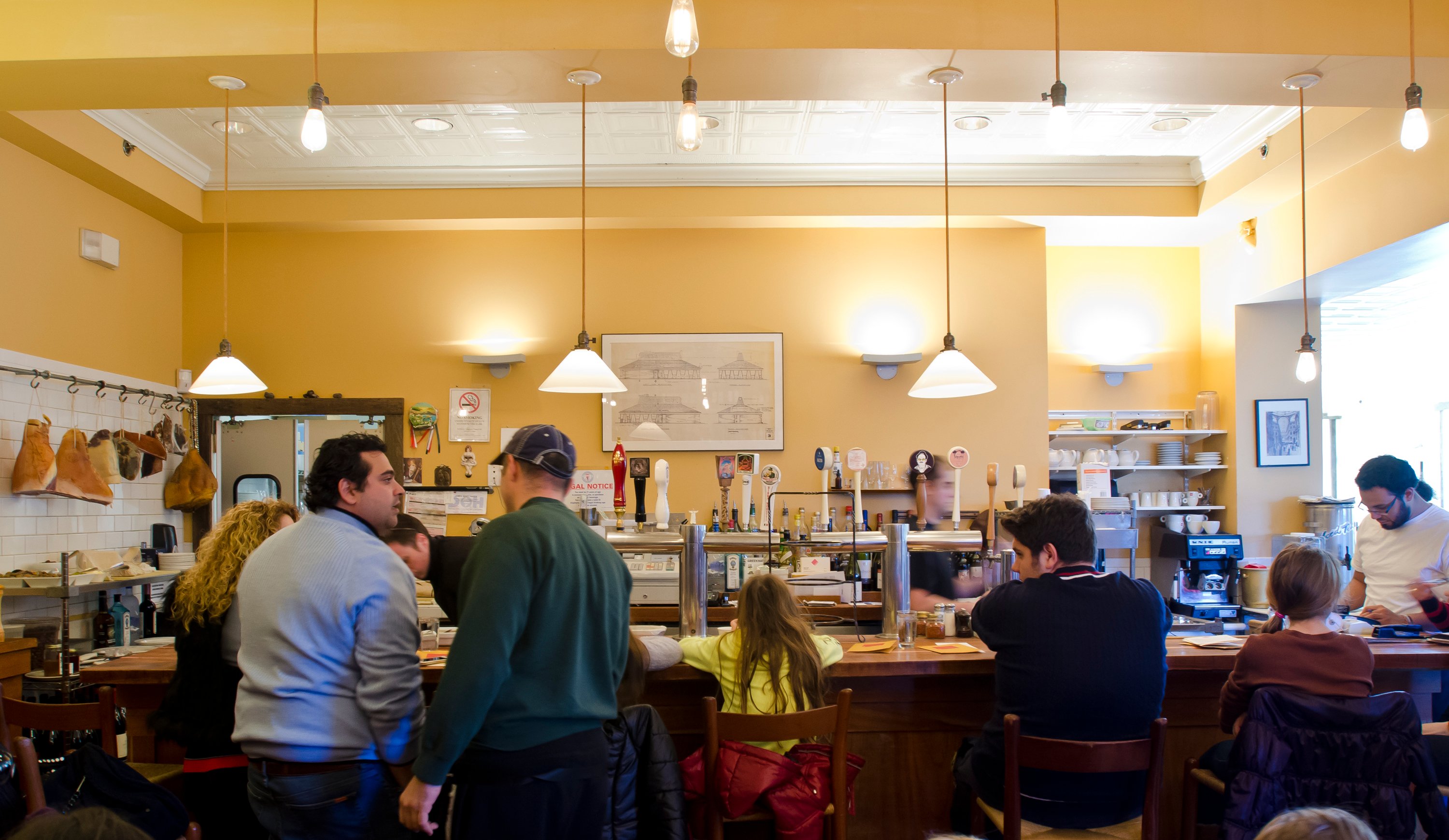
Not all dining rooms will open fully—or open at all.
When it comes to loosened capacity restrictions, a lot of businesses are taking the “Just because you can, doesn’t mean you should” approach. A number of notable restaurants remain closed for indoor dining, operating outdoors and offering takeout. They include Etto, Elle, 2 Amys, Komi/Happy Gyro, and Little Serow. Michelin-starred tasting rooms like Pineapple & Pearls and Minibar remain closed (the latter is eyeing a late summer debut).
For some, the health numbers don’t add up.
“Though the daily Covid new case numbers and deaths have been on the decline, we’re still in a pandemic with less than 40 percent of the city vaccinated (as of two days ago),” says Bad Saint owner Genevieve Villamora, who plans to continue takeout at her modern Filipino hotspot in Columbia Heights. “Until the numbers significantly improve, we will not be opening our tiny indoor dining room.”
Mike Friedman, chef/co-owner of Red Hen in Bloomingdale and All-Purpose pizzerias in Shaw and Navy Yard, is eyeing a slow early June reopening for his dining rooms (all have been closed for on-premises dining since March 2020, except for Navy Yard, which has limited outdoor seating).
“As we rolled into pandemic times, we’ll roll out of pandemic times. You can’t just jump off the cliff,” says Friedman, who plans to open the restaurants at 50 percent capacity and scale up from there. Bar seating will also be limited, and Friedman says they may implement bar reservations to reduce crowding. “DC law will be what it is,” he says. “But private businesses will have the opportunity to create whatever environment they feel is comfortable.”
Peter Pastan has been operating 2 Amys, his popular Cathedral Heights pizzeria, as a takeout and delivery spot for over a year. He’s planning on opening an outdoor dining space with about 20 alley tables the second week of June, but won’t reopen for indoor dining until a later date.
Pastan says he’s hesitant to act as regulator in his typically packed dining rooms: “I wish the Mayor talked a little bit about why she’s making this decision, what metrics she’s using. It seems so haphazard, it’s super frustrating. I don’t want to be the vaccination police. You want to ask someone for a card and have them ream you out for an hour and scream at you?”
Others are taking their neighborhood demographics into consideration when it comes to reopening fully.
“People are very Covid conscious in Takoma Park, and I don’t think they’d be happy if we opened at full capacity,” says Cielo Rojo chef/co-owner Carolina McCandless, who plans to keep operating her upscale, vegetarian-friendly Mexican restaurant with patio-seating only. Another factor for McCandless: a robust takeout and delivery operation that’s turned her 30-seat restaurant into an assembly line operation filled with boxes. So far, she says to-go orders have made up for a lack of indoor dining over the past year, and she’s still receiving lots of requests for family-style takeout dinners as small groups convene in homes. But that may change.
“I’m going to go with the flow” McCandless says. “It’s been a big year of being flexible and listening to what customers want.”
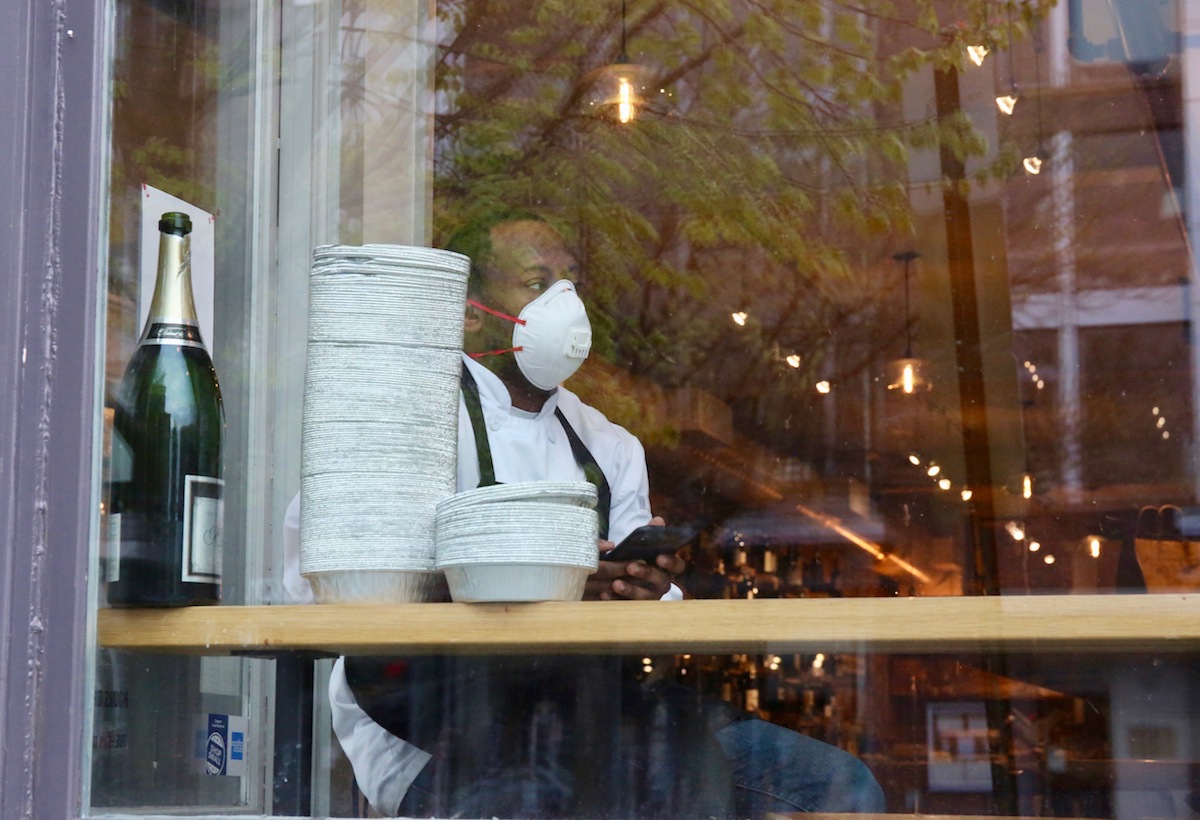
Mask policies will vary by restaurant.
DC lifted its longtime mask mandate on Monday per CDC guidelines, though businesses and employers can still require people—vaccinated and not—to wear masks. That leaves a lot of room for interpretation and potential confusion.
Jackie Greenbaum operates several bars and restaurants in DC and Montgomery County including Bar Charley, El Chucho, and Quarry House Tavern (she plans to reopen the latter place, her storied Silver Spring basement bar, in early June). She says she’ll require masks for employees and patrons who aren’t eating and drinking until all of her employees are vaccinated and have passed the two week post-vaccination window. After that, employees will remain masked for another few weeks, until about mid-June.
“I’m assuming that most everyone is doing what we’re doing, which is pacing ourselves,” says Greenbaum. “Employees are exposed to a far greater number of people. And we don’t want our customers to be shocked that no servers are wearing masks.”
Others are more eager to get back to pre-pandemic normalcy. Farmers Restaurant Group, which operates six massive American restaurants in the DC area, is going “full speed ahead,” per founder Dan Simons. “Our plan is to operate at full blast with RPMs cranking and go for it.” Part of that equation for Simons is encouraging all employees to get vaccinated. He’ll have Covid vaccination clinics at the restaurants—they also provide similar on-site flu vaccinations—and will give employees paid time off to get vaccinated elsewhere. Simons says they also just implemented a new mask policy. For guests, they are optional. Same for employees that show proof of full vaccination.
“It’s like a reward, and it’s pretty compelling for folks who are vaccine hesitant,” says Simons.
Throughout the pandemic, restaurants have used their social media accounts to share the latest updates in a constantly shifting environment. The same is true with mask policies—it helps to call or check Instagram and Facebook before visiting, and when in doubt, just bring a mask.
https://www.instagram.com/p/CPJF4RxBQUx/?utm_source=ig_web_copy_link
Bars may be slower to return to full capacity.
Per DC regulations, bartenders haven’t been able to serve patrons directly for over a year. That’s caused some in the industry—one that’s historically reliable for employment—to leave the area, or ditch hospitality all together. Meanwhile the thirst for good drinks has never been stronger.
“I think one trend we’ll see, that’s present everywhere in the industry, is cocktail sales are way up, wines are way down,” says Max Kuller, co-owner of Logan Circle Spanish spot Estadio. “It makes a lot of sense because people have been at home drinking wine, and they want to engage people making things for them.” That said, Kuller is only offering very limited indoor dining at Estadio and no bar service yet. “We’d like to open the bar right away, but we’re not going to because staffing challenges. If people are sitting at the bar they’ll want to drink cocktails. It’s not a Covid decision, it’s a functionality of the restaurant.”
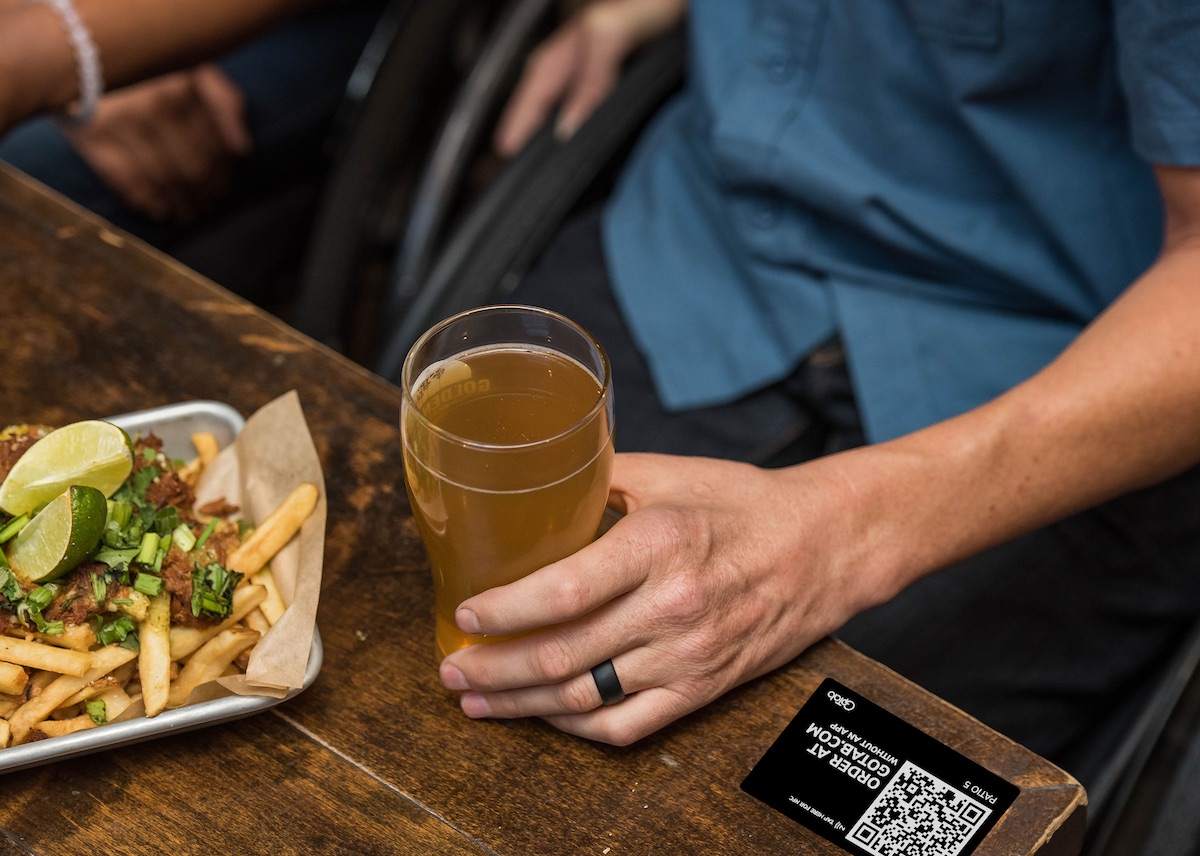
Pandemic rules may go, but pandemic tools will stay.
Businesses adopted new procedures to help them get through the pandemic, and some tools that helped increase functionality or revenue aren’t going anywhere. That means some places—especially those that are short-staffed—will continue using QR codes that allow dine-in customers to order and pay at their tables without a dedicated server, as well as for takeout and delivery.
Arlington-based GoTab, which largely provided QR technology to beer gardens and other come-and-go venues prior to the pandemic, is now being used widely at DC-area restaurants. The company says they’ve experience 85-times more transactions since Covid started, and businesses are seeing the benefit. Maketto, for instance, is now operating with 60 percent fewer front-of-house staff thanks to the new technology. QR codes also help eliminate wasted table time, like patrons waiting for a busy server to process the bill. At Espita in Shaw, the restaurant has been able to cut down 30 minutes per table, allowing the Mexican restaurant to accommodate more diners.
The higher cost of operating restaurants in the pandemic also hasn’t changed—whether that means the cost of additional cleaning and sanitization measures, takeout containers, delivery drivers, or the rising price of certain in-demand ingredients like chicken wings. For that reason, diners may still find automatic service charges.
“Half of our customers are like ‘What pandemic? It’s over. Why do you need a pandemic surcharge on your check?’,” says Simons of Farmers Restaurant Group, which automatically includes a 5 percent fee with dine-in bills. “Sales are down 40 percent. We’ve seen 9 million in cash losses in the last 14 months,” says Simons. “I’m thrilled you feel that way, but the pandemic is not over.”

